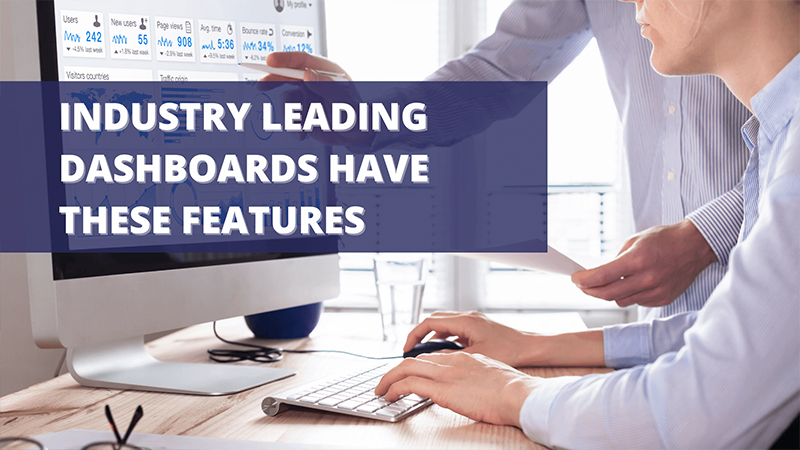Implementing dashboard analytics is the first crucial step to maximize earnings. Industry-leading dashboards allow you to take full control of the financial state of your healthcare practice and meet your revenue cycle targets.
Overall, RCM dashboards can empower healthcare providers to operate more efficiently. Simple recurring errors alone may cost as much as 5% of revenue. Inefficient processes cost even more. These issues quickly add up to substantially reduced profitability in healthcare.
Seeing your data in a dashboard form helps to keep your processes efficient and accurate, increasing your day-to-day cash flow plus you can count on consistent results.
However, not all dashboards are made equal. Here are the key features you should look out for when considering a revenue cycle management dashboard.
Top features of leading RCM dashboards:
1. Actionable data
The dashboard is integrated with your system and updated regularly so that you have access to a data-driven business intelligence tool, providing visibility of your revenue cycle management performance, anytime anywhere.
We are living in a period of time where data is everywhere and can be overburdening, therefore the best RCM dashboards have simplified it for you to extract insights to improve your operations. Leveraging your systems latest available data, you can slice and dice your RCM cashflows by physician, procedure code, or facility. Whether its via drilling down on a specific physician or gaining a holistic view of your accounts receivables by aging, interactive dashboards enable you to perform the analysis you desire within seconds.
2. Available on any device
Leading dashboards allow you to access your data from anywhere, and at any time. Whether it’s from your office using your computer or while commuting using your phone/ tablet. Make informed decisions while on the go.
Good dashboards also ensure layers of security that will enable you to safely explore your data, no matter where you’re located or if you use a laptop, tablet, or mobile phone. This kind of flexibility empowers users to answer business questions immediately, perform analysis on the go, and avoid expensive in-house IT management and maintenance.
3. Key performance alerts
Leading dashboard allow you to setup performance alerts which can be when you achieve or exceed targets or when performance is falling below a minimum threshold. The latter is particularly useful for you to take corrective measures immediately. When performance levels begin to fall too low, warning alerts can be automatically issued, typically via email. Such proactive performance management at a glance allows users to act upon areas of exception and become aware of concerns before they escalate.
Equally, this also allows users to recognize and celebrate success as they happen which can set habit and processes for them to occur more frequently.
4. Root cause analysis
Through leading dashboards it can become easy to performance root cause analysis whether for problems or opportunities. For revenue cycle management this is typically used to understand claim denials which form a significant portion of revenue leakage in most healthcare practices within the US.
It is estimated that up to 90% of claim denials are easily preventable and the first step to ensuring they do not occur is to understand the reason for failure. A best-in-class RCM dashboard will help you find out where the problem lies and avoid making those errors in the future.
5. Simplified trend analysis
Insights are derived when patterns are more obviously represented in the form of trends. In well visualized dashboards these patterns can be presented as trend lines and further dissected against several variables (location, date, procedure codes, etc).
In RCM trends are helpful in understanding where your payers stand by analyzing their denial rates and average underpayments. You can even glance through to see denial trends over time, enabling you to accurately forecast end of period differences in expected vs actual revenue.
6. Artificial intelligence
Yes, even simple RCM dashboards if made according to industry leading practices can leverage the power of artificial intelligence to make usability and insight better. The use of natural language processing (NLP) allows data to be queried through typed commands. When you don’t have anytime to deep dive into your operations, you can simply ask a question, just as you would a human, and receive answers instantaneously. Such questions can range from the simple “What is total the receivables due from the top three payers?” to the more complex “What is the top reason for claim denials in 2021 and 2020?”
Imagine having a Q&A with your dataset to get the answers that you need within seconds. Now that’s industry leading!

